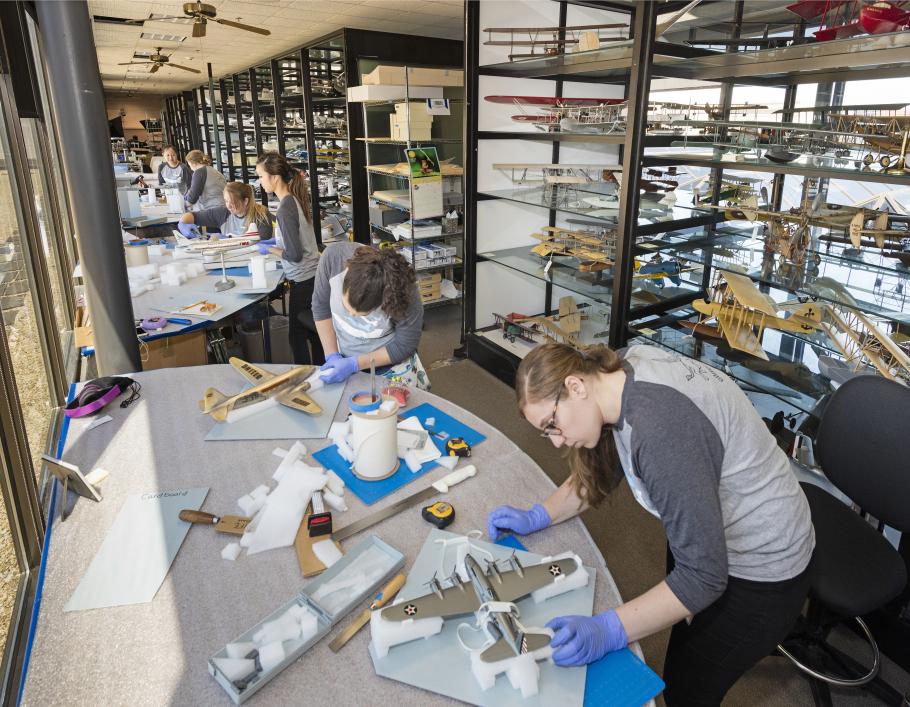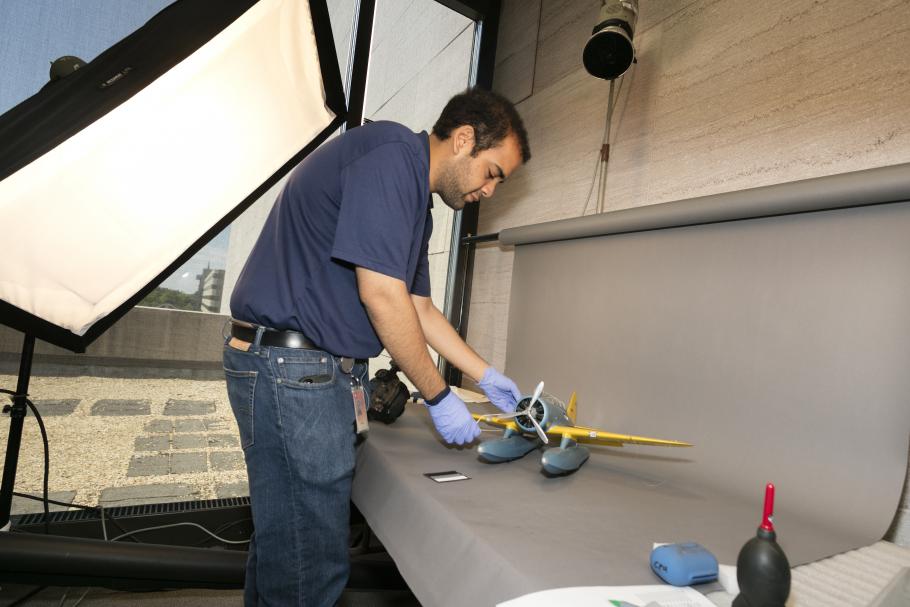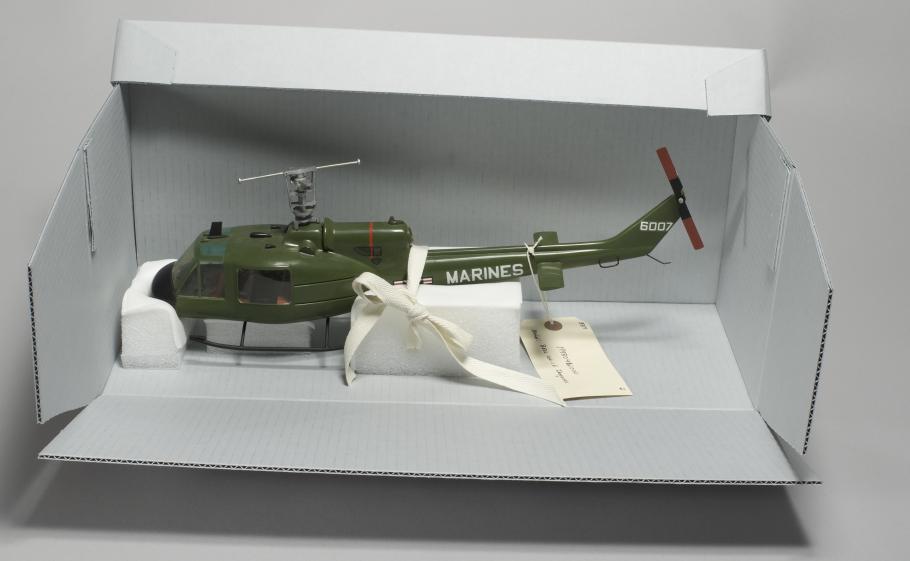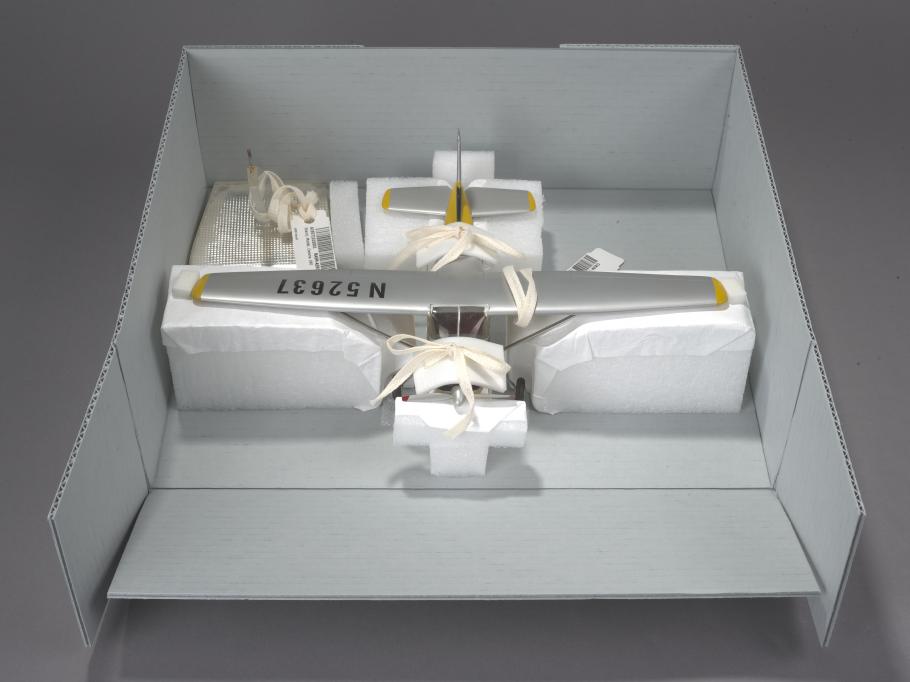You may be surprised to know that in addition to the largest collection of authentic aviation- and space-related artifacts in the world, our Museum also has an impressive model collection. Our model collection contains more than 5,700 models of aircraft, balloons, and more. Nearly 1,100 of those models are on display at our Museum and the rest are in storage. Approximately 800 of those models share space with our staff on the third floor of the Museum in Washington, DC. But not for much longer. Last June, we began the time-consuming process of relocating the models from the third floor to storage at the Steven F. Udvar-Hazy Center in Chantilly, Virginia. The move was brought on by a multi-year project at the Museum in DC to upgrade the exterior of the building and the interior mechanical systems. Before construction begins, the models need to be moved. How do you relocate more than 800 delicate models? First, you assemble a talented team, or in our case, multiple teams. This project includes a survey team to record the condition of each model; a move team to relocate the models; a photography team to document each model; as well as assistance from curators, collections managers, registrars, and many others throughout the Museum and the Smithsonian.
Rebeccah Treser (right) and Ashley Schwartz (left) create custom support and handling trays for models. Treser and Schwartz are a part of a team that are moving more than 800 models from the Museum's third floor in Washington, DC to storage at the Udvar-Hazy Center.
Photographer Jason Smith prepares a model for high resolution photography. Smith is a part of a team that is moving more than 800 models from the Museum's third floor in Washingon, DC to storage at the Udvar-Hazy Center.
Each model goes through the following process before being shipped to the Udvar-Hazy Center. Condition Assessment Surveys These surveys record the current condition of the artifact, the materials the artifact is composed of, dimensions, and notes about any markings or damage found on the artifact. All of the information collected is added into our collections database. This is our chance to address any inconsistencies in our records. Our goal is to ensure that documentation for all of the models is complete, consistent, and easy-to-access for staff and researchers. High Resolution Photography Each model is photographed from five to seven different angles to record its current physical state. The images are saved in our database, and in the future we hope to share them online. Access to these images reduces the number of times that the artifact itself needs to be physically handled, which will enhance the long-term stability of the artifact. Rehousing for Shipment and Storage We create a unique support and handling tray for each model. Stock and custom, acid-free board boxes are used to provide protection from contaminants and light during shipment and storage. The models are secured within the box in such a way that the entire artifact is easy to see without needing to be removed from its container. This enhanced visibility, again, reduces the need to handle the artifact directly. Once each model is secured within its handling box, the box is packed into a larger shipping container and delivered to the Udvar-Hazy Center.
A model of a Cessna 180 light aircraft in a custom-made storage box.
This move is just one of many happening in the Museum. More than 9,000 artifacts, also located on the third floor, will all go through the same process by our deadline of March 2016. These include space and aeronautics memorabilia, pins, and insignias.
While you can’t see the models we’re working on in person, you can explore many of them online. Are you a model maker yourself? Tell us what kind of models you have in your collection.




